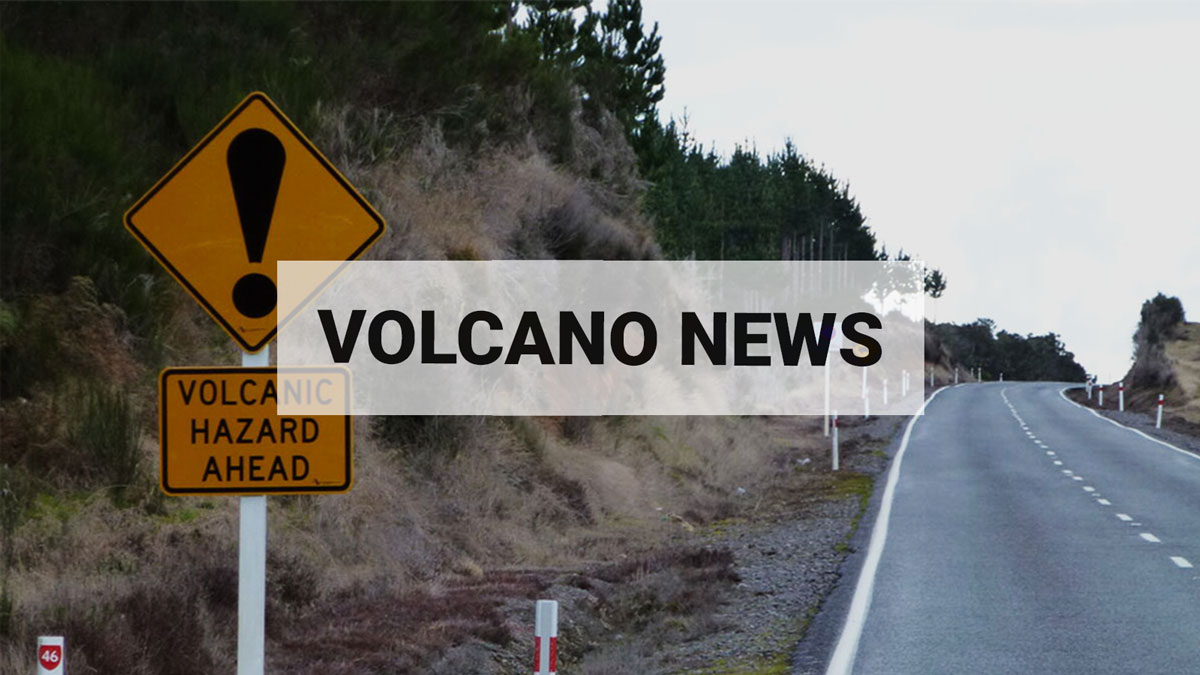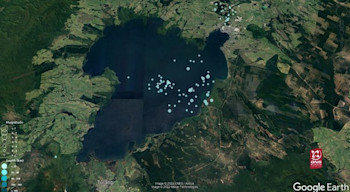
Earthquake swarm under Lake Taupō
The GeoNet earthquake monitoring network has recorded a small swarm of earthquakes at Lake Taupō over the last 2-3 weeks.
What’s happening?
We’ve located over 84 earthquakes under Lake Taupō since 28 April, with only two of these being over M3 in size. Earthquakes in the Lake Taupō area are typically shallower than 15 km, and the recent events are no different, with depths ranging from 3-16 km.
The recent earthquake activity has been grouped in two places under the lake. A cluster trending NE-SW along the east shore and a cluster in the middle of the lake. There have also been earthquakes to the north, around the Wairakei geothermal system, as you can see in the image below. Only a few of the larger quakes in this sequence have been felt locally.
What do these earthquakes mean?
Earthquake swarms are common in the Taupō Volcanic Zone (TVZ), and several are recorded each year. The swarms can be related to the active faults in the TVZ and volcanic processes at the caldera volcanoes like Taupō and Okataina. Larger ones have lasted weeks-to-months and can include many hundreds of earthquakes.
In the last 10 years we have located over 4,200 earthquakes under Lake Taupō. These are part of the activity that defines the background level of unrest for Taupō Volcano. The recent earthquakes are in a similar location to a series of earthquakes in 2019 that were studied in detail by the ECLIPSE programme (see below). That study showed the earthquakes are related to the margins of the hot mush zone under the volcano and are signs that Taupō volcano is active. Variations in the level of background unrest are common for caldera volcanoes like Taupō.
Taupō volcano research
The ECLIPSE (Eruption or Catastrophe: Learning to Implement Preparedness for future Supervolcano Eruptions) programme, which includes several GNS Science volcano experts, aims to understand New Zealand's largest volcanoes.
The ECLIPSE Programme is currently undertaking research on Taupō Volcano and hopes to reduce the uncertainty around future TVZ (Taupō Volcanic Zone) supervolcano unrest episodes and eruptions.
More about Taupō volcano
Lake Taupō is a large caldera volcano, a special type of volcano that has rare but unusually large eruptions. 29 eruptions have occurred from Taupō volcano in the last 30,000 years, the most recent about 1,800 years ago. Three of the eruptions have been very large, however, 26 have been much smaller eruptions, forming lava domes or spreading pumice and ash over nearby areas. Some were the same size as the Ruapehu 1995-96 eruptions.
We know that Taupō is still active because it shows signs of what we call ‘volcanic unrest’: small earthquakes, movement of the ground up and down, and changes in the geothermal fields in the area. There have been at least 17 episodes of volcanic unrest at Taupō in the last 140 years that have been above the background levels.
GNS Science through the GeoNet programme continually monitors Taupō, and our other active volcanoes, for signs of activity. You can learn more about volcanoes in New Zealand here.
Although we can’t prevent natural hazards, we can prepare for them – and we should.
Earthquakes can occur anywhere in New Zealand at any time, In the event of a large earthquake: Drop, Cover and Hold.
The National Emergency Management Agency's (NEMA) Get Ready website has great information on what to do before, during and after volcanic activity.
Science information - Brad Scott, Volcano Information Specialist
Media enquiries - media@gns.cri.nz or 021 574 541

